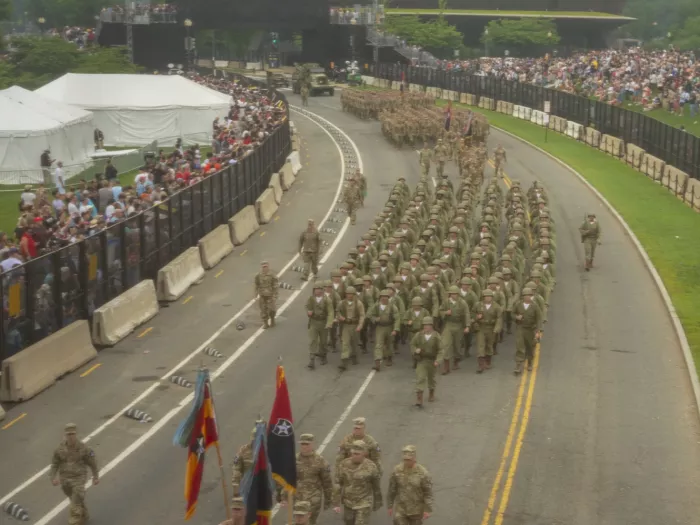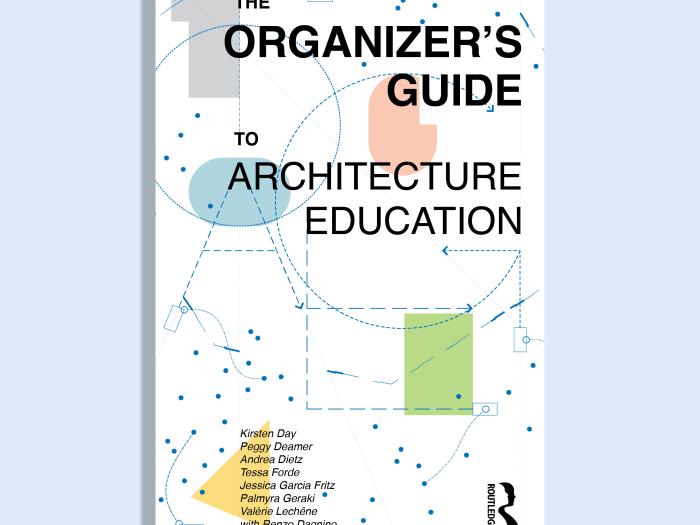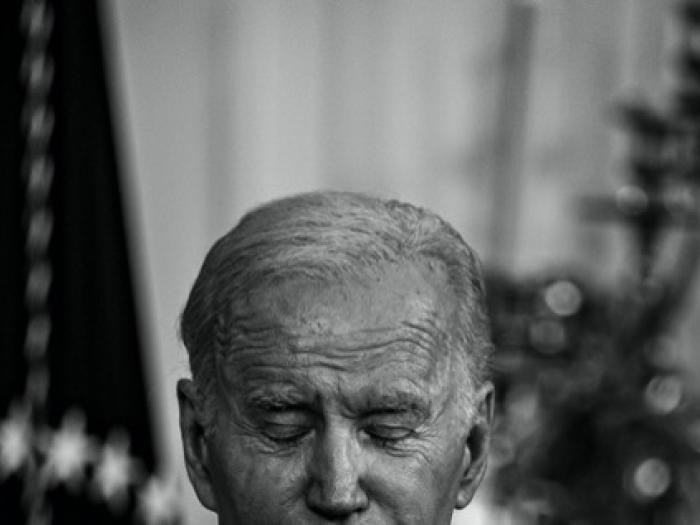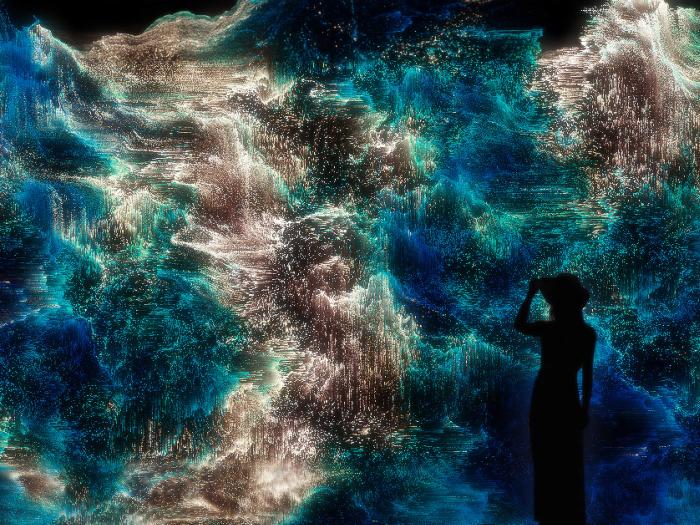Fine Arts
BACHELOR OF ARTS | BACHELOR OF FINE ARTS | DUAL DEGREE | MINOR
An experimental approach to art-making and access to a research university for engaged, diverse and inquisitive artists
In our Fine Arts degree programs, you discover your own creative direction through foundational coursework, exposure to diverse creative practices and experiences, rather than through directives for specific artistic aesthetic. We encourage our students to develop their own artistic direction through studio practices, our experienced faculty and the inspiration of Washington, D.C.’s vibrant cultural life and renowned galleries and museums.
The Corcoran offers four undergraduate degrees and three minors:
- Bachelor of fine arts in fine arts,
- Bachelor of arts in fine arts,
- Bachelor of arts with a concentration in photojournalism,
- Bachelor of arts with a dual major in art history and fine arts,
- Minor in fine arts,
- Minor in photography,
- Dual minor in fine arts and art history.
Learn more about earning a BFA in Photojournalism.
Studying the arts at a major research university provides students access to the George Washington University’s extensive research resources. With an interdisciplinary approach to contemporary artistic practices, Corcoran students are encouraged to extend beyond their comfort zones, redefine their practice and prepare for creative pursuits after graduation.
PROSPECTIVE STUDENTS
CURRENT STUDENTS
INFORMATION SESSIONS
Each academic year, we offer virtual information sessions led by faculty to help prospective students learn more about our programs, faculty expertise, and application process.
The Arts at GW
Studying at the Corcoran and GW is perfect for students excited to make a commitment to their creative progress within a challenging but supportive academic community. Choosing an art school at a major research university in a metropolitan area provides unique experiences that you won’t find anywhere else. While our class sizes are small, making it possible for in-depth discussions and access to faculty, you also have opportunities to work with curators and researchers around D.C. and across the larger university. You’ll find yourself blocks away from world-renowned cultural institutions, can easily attend D.C. art events and can view and participate in exhibitions on campus in spaces like Gallery 102.
Studying your craft at our school is right for you if you’re ready to make a commitment to exploring your creativity and research interests while being mentored by the country’s leading artists and scholars. If you want to find out what you can become at a place where you are supported in building a practice engaged with issues in the studio and world, the Corcoran and GW are home.
Work shown by Tyler Jones, BA '23
Program of Study
Courses in the fine arts cover a wide range of studio arts including, sculpture, ceramics, photography, video, painting, drawing, printmaking, book arts, performance, socially engaged practices and new media. Our curricula emphasize a critical and creative relationship between content and form, an awareness of historical connections, and engagement with varied contexts of creative production. The program you choose will impact the course requirements.
A scene from a Studio Arts undergraduate course taught by Professor Michele Carlson. Photographer: William Atkins Date: March, 6, 2024
All first-year BFA students take Corcoran Foundations courses. For two semesters, you are an essential member of a tight-knit group of artists, designers and photographers. You will develop relationships across studio areas and foster multi-disciplinary approaches to making and problem-solving that can sustain a life-long investigative practice. Here you learn to think and communicate like an artist, take risks and challenge your assumptions, while developing the fundamental skills necessary to read and manipulate the complex language of images, forms and cultures that make up the world around you.
Learn More About Corcoran Foundations
Work shown by Alyx Williams, BA '23
CURRICULUM DETAILS
BACHELOR OF FINE ARTS
The BFA degree in Fine Arts is a full-time program requiring 78 credits of fine arts and art history courses out of the total 120 credits to graduate. Focusing on key aspects of art and design, four foundational courses are required for all BFA programs:
- Drawing and Surface
- Form and Materials
- Time and Light
- Interaction
In subsequent semesters, students in Fine Arts Studio and Thesis courses are presented with content-driven assignments geared to guide students towards an increased understanding of their own artistic practices in relation to the contemporary art world, meaning they can work in any medium. Courses of focused study include ceramics, painting and drawing, photography, printmaking, sculpture and performance and time-based media.
BACHELOR OF ARTS
The BA degree in Fine Arts is a full-time program requiring 51 credits of fine arts and art history courses out of the total 120 credits to graduate. Students balance studio-based work with other academic programs of study.
Fine Arts students are encouraged to cross conventional visual, technical and conceptual boundaries as well as to engage with the history and traditions of art. Working at a research university prepares students to respond to the complexity of possibilities facing the contemporary artist.
The program emphasizes a critical and creative relationship between content and form, an awareness of art historical connections and engagement with the contexts of creative production.
DUAL BACHELOR OF ARTS IN FINE ARTS AND ART HISTORY
The Dual BA degree in Art History and Fine Arts is a full-time program requiring 60 credits of fine arts and art history courses out of the total 120 credits to graduate. This program suits students interested in art-making and in the history and development of art practices over time.
As a research university, GW prepares students to respond to the complexity of possibilities facing the contemporary artist with expanded avenues for artistic research. Artists interested in conceptions of the body and gender or political commentary, for example, will find relevant courses from experts at GW. In today’s world, artists must take an interdisciplinary approach to create innovative and interesting art, and GW provides the opportunity to put this skill into practice. Our students are prepared to ideate rich subject matter, processes and outcomes. Our program emphasizes a critical and creative relationship between content and form, an awareness of art historical connections and engagement with diverse contexts of creative production.
BACHELOR OF ARTS WITH A MAJOR IN FINE ARTS, PHOTOJOURNALISM CONCENTRATION
The BA degree in Fine Arts with a Photojournalism Concentration is a full-time program requiring 42 credits of fine arts and art history courses and an additional 9 credits of School of Media and Public Affairs courses out of the total 120 credits to graduate. Students balance studio-based work with other academic programs of study. Focusing on key aspects of analogue and digital processes, the program begins with two photography foundations courses: Black and White Photography Fundamentals and Introduction to Digital Color Photography.
In subsequent semesters, students in Photojournalism Studio and Thesis courses are presented with content-driven assignments geared to guide them towards an increased understanding of their own photojournalistic practices in relation to professional photojournalism and contemporary photography more broadly.
MINOR IN FINE ARTS
The Minor in Fine Arts enables students to take courses in a variety of media at the introductory to advanced levels. As in our major degree programs, students are encouraged to cross conventional visual, technical and conceptual boundaries. The following requirements must be fulfilled: 18 credits, including a two 3-credit required introductory-level courses in two different media and 12 credits in elective courses.
MINOR IN PHOTOGRAPHY
The minor in photography offers a structured and in-depth path to students who want to pursue deeper learning in fine art photography or photojournalism as a complement to their major field of study. Students who combine their majors with a minor in photography leave GW better prepared to work in the arts or media and, most importantly, are able to understand the role of visual representation as it relates to their careers in any field.
DUAL MINOR IN ART HISTORY AND FINE ARTS
The minor in art history and in fine arts is designed for students who are interested in artmaking as well as the history and development of art practices over time. The program emphasizes a critical and creative relationship between content and form, an awareness of art historical connections, and engagement with diverse contexts of creative production.
Study at a research university prepares students to respond to the complexity of possibilities facing the contemporary artist with expanded avenues for artistic research. For example, students whose artwork considers conceptions of the body and gender, or comments on politics, have opportunities to take courses from GW experts in relevant fields. The program helps artists develop the skills needed to take an interdisciplinary approach to creating innovative and intriguing art, which is critical in the current environment. Having developed a strong and diverse background in their program of study, students are able to ideate richer subject matter, processes and outcomes.
The following requirements must be fulfilled: 9 to 12 credits of coursework in Art History and 9 to 12 credits in Fine Arts, for a total of 21 credits. The student’s program of study is developed in consultation with the undergraduate advisors.
WHAT WE CREATE
Maricarmen Solis Diaz, BFA ’22, gained a passion for art and activism through the vibrant culture of Los Angeles and her time spent in D.C. In 2021, she completed an internship at the Getty Research Institute at the Getty Center in Los Angeles.
A short documentary, A Dream Realized, followed Maricarmen as she completed her thesis - a large mural inspired by her Mexican heritage for the Corcoran NEXT exhibition.
BURDEN, a 2018 piece by Yacine Fall, BFA '19, explores privilege in America. “This notion of privilege rests on the backs of those who have been denied this socioeconomic advantage while it caters to the majority race in this country,” said Fall.
Layla Saad, BFA '19, is a Fine Arts major who stands out with her own unique perspective as a Muslim student. She is grateful for the freedom of expression she has found at the Corcoran, and enjoys the creativity and problem solving it takes “to express [her] art on [her] own terms.” The videographer, Adil Siddiqui, is an international student from Pakistan, who recently graduated from the MA New Media Photojournalism program.
Students at the Corcoran have exhibited their thesis work for more than 30 years. In 2011, the exhibition came to be known as NEXT in a nod to the public seeing “what’s next” in contemporary art and scholarship. In 2023, NEXT evolved into a festival format to encompass the diversity of all the school’s programs and provide more public facing programming for the DC community. See examples from past classes’ culminating projects and work.
Elisa Durán-Ballén (Fine Arts BA, ‘24) is a transdisciplinary artist born in Guayaquil, Ecuador. In her work, she prioritizes materials that retain a closeness to the earth. Her process is primarily grounded in tactile intuition, while borrowing from long traditions of manual craft to create pieces that link the body to the product of its labor.
Elisa’s thesis project for NEXT, lost and found, is based upon the journey of finding one’s own voice as an artist. While moving away from home seemed like the logical way for Elisa to gouge out the rules and layers that don’t resonate, and discover her artistic truth, the artist found a profound longing for familiarity in her work. In lost and found, Elisa reflects upon the aspects from her upbringing that make her whole, concluding that we are inevitably drawn to the things that bring us back to where we came from. The thesis came together as an assemblage of memories and ways of making borrowed, found, and passed down over time.
Photo Credit: Maria Luz Bravo (Photojournalism '18)
In 2021, Fine Arts B.F.A. students like Maria Clara (Mari) Rios Cacua created art pieces that addressed and portrayed ideas and stories much deeper than surface level as part of NEXT, a year-end celebration of art and scholarship. Mari’s “I Am The Sender” is a commentary on the position that immigrants often find themselves in as they leave home to search for something they’ve yet to discover: “My work as of late is focused on identity and immigration within the larger sociopolitical climate of America. I’m particularly interested in making work that challenges the viewer to have to look closer and think.”
Art shown: Maria Clara Rios Cacua, “See Me,” India ink, acrylic, embroidery, charcoal, oil paint pens, linoleum print on stretched canvas paper.
ALUMNI PROFILES
Ian Svenonius (BFA '90)
Svenonius is an icon of the D.C. punk scene. The Washington Post has described him as the “most interesting man in rock-and-roll.” As a Corcoran student, he primarily drew comics “about revolution.”
Tara Donovan (BFA '91)
Donovan creates sculpture, drawings, prints and large-scale installations that transform the banality of everyday objects into the extraordinary.
Tim Gunn (BFA '74)
Gunn is a fashion consultant, television personality, actor, voice actor and author. Gunn was involved in the hit TV show Project Runway.
News Highlights

Flags, Tanks, and Tension: Matt Eich’s Take on a Divided Celebration
June 15, 2025
Corcoran faculty member Matt Eich documents a surreal military parade in D.C., capturing the tension between patriotic display and nationwide protest in a striking photo essay for The Atlantic.

Corcoran Design Program Head Andrea Dietz Celebrates Book Release with LA Tour
April 21, 2025
The Corcoran School of the Arts and Design is proud to congratulate Andrea Dietz, head of the Design program, on the release of her co-authored book, The Organizer’s Guide to Architecture Education (Routledge, 2024).

Assisant Professor Matt Eich’s The Invisible Yoke Featured in The New York Review
April 4, 2025
Assistant Professor Matt Eich’s photobook series The Invisible Yoke reviewed in The New York Review.

Fine Arts Professor Honored with Fulbright Fellowship
July 18, 2024
Allyson Vieira, assistant professor of foundations, received a Fulbright U.S. Scholar Program award to teach and conduct research in Greece for the 2024-2025 academic year.

Sustainability Project Winners, TikTok Stars and Photographers for TIME: Corcoran Students Shine in 2024
July 2, 2024
Whether documenting protests for TIME, reporting from the red carpet at the Kennedy Center, or winning prestigious awards, this spring our students have jumped into new and exciting opportunities in the art world.

Students Present the ‘Giant Tableau’ of Arts at George Washington University
April 15, 2024
This year’s NEXT Festival promises something for everyone.












